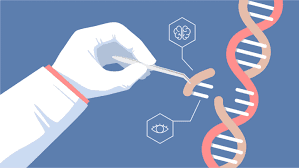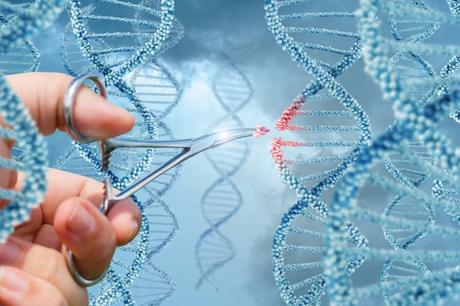Let’s talk about gene editing and its potential to change lives. It’s because of CRISPR — a technology that’s not even 10 years old and can basically perform surgery on our genes. The inventors got a Nobel Prize for it in 2020.
CRISPR fans say it’ll fight diseases and improve crops. Well, Hollywood tapped into their fears a long time ago. At least one scientist has crossed the line.

So how does gene editing actually work?
Can CRISPR be used to cure disease? And how far should we be allowed to go in transforming the human race? Genes are the blueprint for making everything the body needs. And human beings have more than 20,000 of them.
Genes are made up of DNA and that instructs the cell how to make a protein. Those proteins carry out the functions of the body and determine the way we look. But some gene variations can make us sick. Scientists, though, may now have the unprecedented power to change those genes.
It’s all because of the work done by two Nobel Prize-winning scientists: Emmanuelle Charpentier and Jennifer Doudna. What they discovered has unleashed a whole new era of genetic engineering that’s advancing just about every day.
The tool is called CRISPR–Cas9. And like so often happens in science they discovered it by chance. Charpentier and Doudna were studying how bacteria protect themselves from viruses because, yes, bacteria get sick too. They found that bacteria have a part of their DNA called CRISPR that stores tiny pieces of a virus’s DNA.
A copy of that bacterial CRISPR DNA is made the next time the virus comes back. Small parts of the copy then join up with a protein called Cas9. So CRISPR–Cas9 goes looking for that matching bit of DNA in the virus, latches onto it, and through a chemical reaction, it snips the viral DNA to destroy it. It’s why scientists describe CRISPR–Cas9 as a pair of genetic scissors.
So Charpentier and Doudna then thought: Why can’t we harness that same natural process but program it to cut out genes that are faulty and replace them with healthy ones. That was the lightbulb moment. It’s simple to use and cheap and that makes it revolutionary. Because it could treat, perhaps even cure, genetic diseases like muscular dystrophy, cystic fibrosis, even cancer. And a lot of attention has been on sickle cell disease.

In fact, scientists have already used it on a woman named Victoria Gray. She was the first person in the US to receive a CRISPR-based treatment for the disease. Doctors infused her with more than 2 billion of her own genetically edited bone marrow cells. More than a year later almost all her symptoms are gone. Just to be clear — CRISPR is being used here like any other medical treatment. Any genetic changes stay with that patient.
They aren’t passed on to their children. They’re not hereditary changes that affect the human gene pool forever. That’s because scientists are fixing faulty genes in somatic cells — basically all the cells in our bodies except the single-cell sperm and egg. And it’s important to point out the patient is an adult who’s consented to the treatment. But some are suggesting using CRISPR on early embryos to make the genetic fix.
And for a lot of safety and societal reasons, scientists say that’s a step too far. But that didn’t stop a Chinese scientist from going there. In 2018 He Jiankui announced the birth of the world’s first CRISPR-modified babies — twin girls known only as Lulu and Nana. There was outrage. He’d altered a gene to try to protect them from HIV because their father has AIDS. But he did it while the girls were still in a petri dish. And that’s why his use of CRISPR technology is a problem. He genetically altered what is called germ-line cells: the sperm, the egg, or in the case of the twin girls, a fertilized egg at the single-cell stage. Changes to DNA here appear in every cell in a person’s body.
You might say that’s an efficient fix but those genetic changes are permanent and are passed onto future generations. Plus, this is unchartered territory. Scientists say there’s a very real risk that an edit could cause a mutation in the genome with side effects that we just can’t predict.
There’s also the issue of consent. The girls obviously had no say in the changes made to their bodies. That experiment alone raised the specter of designer babies, making people smarter, stronger, maybe more attractive. So what’s being done to regulate it? Seventy-five countries already prohibit the use of CRISPR in human reproduction.
But many scientists and governments agree more rules are needed. Right now we have an international commission that’s started to draft some guidelines. None of that, though, has stopped scientists from experimenting with CRISPR — in plants and animals at least. So what happened to the man who did interfere? Well, He Jiankui was sentenced to three years in prison and banned from working on reproductive medicine for life. And the twin girls? No one really knows where they are or whether they’re healthy.
We don’t even know who else in the world is trying this technology. There’s a good chance someone will misuse it and potentially change the human race. That’s enough to want to bury this technology. But CRISPR has enormous potential to transform some people’s lives without hurting anyone else. That’s a power people just won’t want to ignore.
Photo Credit: Google Images
